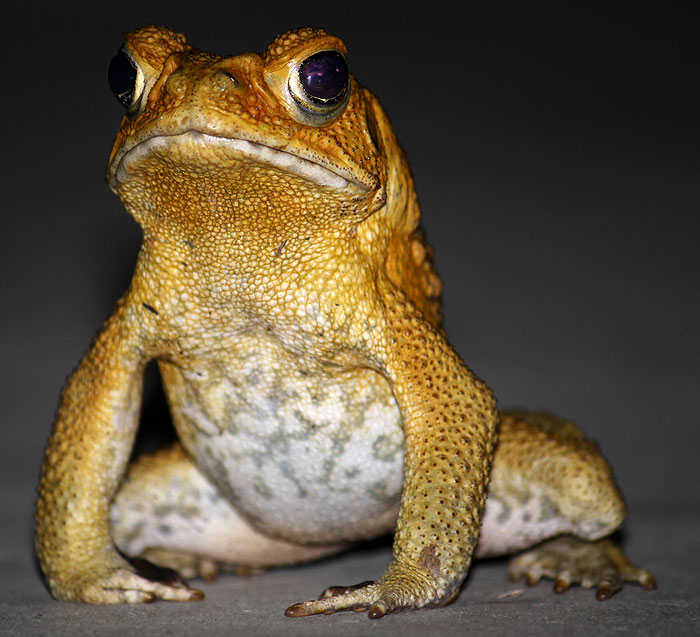Do Blind Snakes Share Your Garden?
This tiny and completely inoffensive snake looks, and I suppose to many people, behaves, more like a worm than a reptile. However, a reptile it most certainly is - complete with forked tongue and beautiful glossy scales.
The reason for such a highly polished body is that the snake spends virtually all its life underground, or at least in the loose detritus on the surface. Rarely will they observably free roam on the "surface". Occasionally after rains - but again, most people would probably dismiss the smaller species (such as this one) as a worm escaping it's flooded chambers. Thus, the tight scales make locomotion in their usual environments much easier.
They eat ants and termites - for this reason alone, they really should be prized. And while, as I said, they are harmless, they do possess one neat trick that might just startle the unwary into letting go - some have a spike in the tail. Which they use if feeling threatened.
Well, when I say spike - it felt a little ticklish - but to smaller animals, a well aimed stab delivered to a sensitive snout could be pretty effective. Like many snakes, they will also release a pungent odour from their anal glands in an attempt to convince would-be predators of their less than suitable snack appeal.
Of the eighteen species known in QLD, only four have been described in TNQ - I think this is probably R.leucoproctus. I have a strong suspicion, though, that due to these guys being so secretive and the fact that they are rarely encountered - there could be many more species just waiting to be discovered.
I came across this critter whilst digging, and it was a minor miracle that I didn't end up with two much smaller blind snakes - happily though, I knew instantly what he was, so, after getting some pics and showing Jo - he is now safely tucked away in a flower bed that has lots and lots of little ants for him to munch on ... nom nom!
It can be a little difficult at times to convey scale - so those are my hands in the pic. And while I'm certainly not 'little', (esp after xmas). I'm no giant either. At most, I would estimate this little fellow to be around 80 to 100 mm T.L. So, all in all, a lucky discovery - and a great start to the week.
The reason for such a highly polished body is that the snake spends virtually all its life underground, or at least in the loose detritus on the surface. Rarely will they observably free roam on the "surface". Occasionally after rains - but again, most people would probably dismiss the smaller species (such as this one) as a worm escaping it's flooded chambers. Thus, the tight scales make locomotion in their usual environments much easier.
They eat ants and termites - for this reason alone, they really should be prized. And while, as I said, they are harmless, they do possess one neat trick that might just startle the unwary into letting go - some have a spike in the tail. Which they use if feeling threatened.
Well, when I say spike - it felt a little ticklish - but to smaller animals, a well aimed stab delivered to a sensitive snout could be pretty effective. Like many snakes, they will also release a pungent odour from their anal glands in an attempt to convince would-be predators of their less than suitable snack appeal.
 |
Ramphotyphlops? |
Of the eighteen species known in QLD, only four have been described in TNQ - I think this is probably R.leucoproctus. I have a strong suspicion, though, that due to these guys being so secretive and the fact that they are rarely encountered - there could be many more species just waiting to be discovered.
 |
This guy was not hanging around for an introduction ... |
I came across this critter whilst digging, and it was a minor miracle that I didn't end up with two much smaller blind snakes - happily though, I knew instantly what he was, so, after getting some pics and showing Jo - he is now safely tucked away in a flower bed that has lots and lots of little ants for him to munch on ... nom nom!
 |
Hardly the stuff of nightmares, is it? |
It can be a little difficult at times to convey scale - so those are my hands in the pic. And while I'm certainly not 'little', (esp after xmas). I'm no giant either. At most, I would estimate this little fellow to be around 80 to 100 mm T.L. So, all in all, a lucky discovery - and a great start to the week.
The Typhlopidae are a family of blind snakes. They are found mostly in the tropical regions of Africa, Asia, the Americas, and all mainland Australia and various islands. The rostral scale overhangs the mouth to form a shovel like burrowing structure. They live underground in burrows and since they have no use for vision, their eyes are mostly vestigial. They have light-detecting black eyespots, and teeth occur in the upper jaw. The tail ends with a horn like scale. Most of these species are oviparous.
Currently, 6 genera are recognised, containing 203 species.
Currently, 6 genera are recognised, containing 203 species.






Comments
Post a Comment